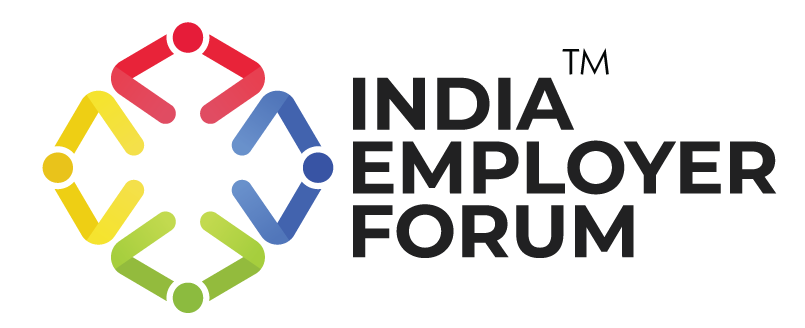Simplified processes and higher withdrawals are offset by gaps in worker protection
India’s reform journey always wrestled with one simple question: how do we make systems more humane without making them fragile? The Employees’ Provident Fund Organisation’s (EPFO) recent overhaul is arguably a long-overdue clean-up of a complex and creaky architecture that millions depend on for financial security. At first glance, consolidating 13 withdrawal categories into just three signals a shift from paperwork to purpose, from control to trust. Yet simplification, while necessary, is not the same as safety. The new norms promise speed and flexibility, but they reopen an old tension between access and security. In the labour market still marked by churn and informality, easier withdrawals may improve short-term liquidity but risk undermining long-term protection. For millions, the PF is not just a savings pool; it is their only old-age safety net.
The reform’s real test lies not just in design, but in execution: whether digital ease matches institutional discipline, whether frequent withdrawals erode retirement security, and whether latent risks such as delayed pensions or inequitable access are effectively resolved. The question is simple but profound – can the EPFO evolve from a rulebook custodian into a genuine service provider, treating contributors as customers, not petitioners? The EPFO’s reset is bold and necessary; it must be judged not by how simple the forms have become, but by how secure the future feels for those who fill them out.
Streamlining Access: Simplicity, Flexibility, and Digital Ease
From both administrative and economic perspectives, the simplification of 13 separate EPFO withdrawal categories into three – Essential Needs (education, marriage, medical emergencies), Housing (purchase or construction), and Special Circumstances (retirement, disability, retrenchment, voluntary retirement, or relocation abroad) – serves both employers and employees. Beyond reducing paperwork, this reform improves transparency, speeds up claim settlements and strengthens procedural clarity. Financial flexibility has been recalibrated – members can now access up to 75% of their EPF balance for essential needs while retaining 25% for post-retirement security. Full withdrawal is permitted in cases of retirement, permanent disability, or permanent relocation abroad, reflecting a balance of flexibility with foresight.
Simplifying procedures and raising withdrawal limits may seem like an unambiguous win, but policy rarely exists in a vacuum. Easier access could unintentionally encourage frequent, short-term withdrawals, especially among workers living paycheck to paycheck. The digital upgrades, while elegant on paper, presuppose digital literacy, internet access, and confidence with online systems – assumptions that do not hold for large segments of the workforce, including rural, older, or low-income employees. The EPFO faces a subtle but critical balancing act – simplification should not become a double-edged sword. Streamlined access must coexist with safeguards that prevent liquidity mismanagement and delayed pensions.
Related Reads
The Friction Points: Liquidity, Equity, and Implementation Risks
Modernisation rarely comes without trade-offs. Extending the final settlement period from 2-12 months risks a liquidity shock for unemployed workers who rely on their PF savings for day-to-day survival. Similarly, the 3-year waiting period for EPS withdrawals may appear reasonable on paper, but for those exiting the workforce permanently, it can translate into unnecessary financial hardship. Even the rules designed to safeguard retirement, such as retaining 25% of the PF balance, can constrain access for lower-income workers during crises.
The challenges are not only financial, but implementation risks loom large. Ambiguous guidelines, inconsistent regional interpretations, and delays in processing could slow execution and erode trust in a system meant to provide certainty. Limited stakeholder consultation, particularly with trade unions, risks being top-down rather than participatory, undermining its legitimacy. Ensuring flexibility does not come at the cost of security and that simplification does not unintentionally disadvantage the most vulnerable. Active engagement, clear communication, and oversight mechanisms deliver its promise – a PF that is accessible today, protective tomorrow, and trustworthy always.
Balancing Reform with Resilience
Shorter waiting periods could be considered for involuntarily displaced or lower-income workers. Strengthening grievance redressal systems, standardising regional interpretations, and improving digital literacy among members will be essential to prevent procedural bottlenecks. From an economic standpoint, these reforms could enhance formal sector participation and retirement readiness, but only if liquidity is protected for vulnerable segments.
Without deliberate, nuanced execution, reforms risk favoring those with resources and knowledge while leaving others exposed to financial insecurity, especially in the informal or gig workforce. Policy design and execution must work in tandem, ensuring that efficiency does not come at the expense of equity, and that digital and procedural simplifications translate into real-world resilience.
Building a Unified Safety Net for India’s Workforce
Millions of contract, gig, and informal workers continue to fall through coverage gaps, making portability and continuity of benefits a pressing concern. In the longer term, the EPFO cannot remain an isolated instrument of retirement savings. Integrating it with broader social security initiatives, including Employees’ State Insurance (ESI), Atal Beemit Vyakti Kalyan Yojana, and emerging gig worker welfare schemes could help create a resilient and inclusive social security protection framework. Digital integration across platforms could further simplify claims and enhance transparency, allowing workers to access benefits through a single interface.
A converged system, anchored by the EPFO, could evolve and develop from merely a savings mechanism into a comprehensive protection system supporting workers throughout their employment lifecycle. Such reforms would strengthen household financial stability, reinforce formalisation, boost trust in public institutions, and make India’s labour market more adaptive to economic shocks and technological disruption.
The EPFO reforms are a bold step toward modernising India’s retirement and pension system. But boldness alone is not enough. The real measure of success will be whether efficiency and flexibility are matched by safeguards and equity, ensuring that social protection does not come at the cost of worker security. By integrating these reforms with broader social security measures, India has the opportunity to evolve the provident fund system into a resilient, inclusive, and adaptive safety net — one that balances efficiency with empathy, and access with security as success measures beyond boldness.






